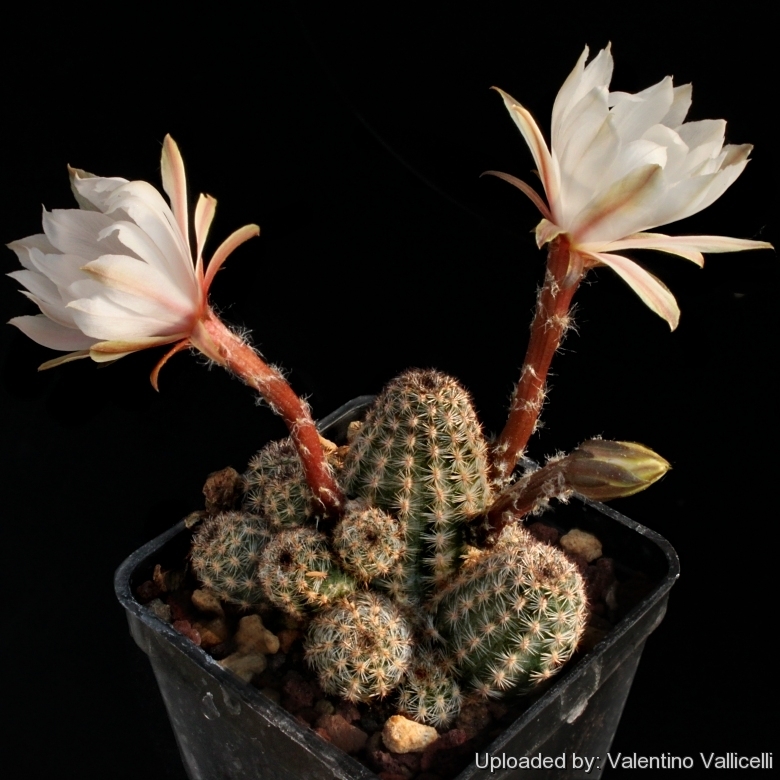
Pygmaeocereus familiaris Photo by: Valentino Vallicelli
Origin and Habitat: Pygmaeocereus familiarisSN|18587]]SN|18587]] is quite common in the Peruvian region of Arequipa in the districts of Chala and Atico, Depart. Arequipa, Peru.
Altitude range: 150-220 metres above sea level.
Habitat and ecology: P. familiaris is one of the typical cactus species of the lomas ecosystems (spreading like vegetation oases throughout the coastal deserts of Peru), which is an important area for the conservation of flora and fauna. The lomas harbor three types of cactus (Eulychnia ritteri, Echinopsis chalaensis and Pygmaeocereus familiarisSN|18587]]SN|18587]]). The results of overgrazing and deforestation are widespread and severe. Throughout the area, reduced water availability is changing the vegetative landscape and reducing community croplands. Fragmentation of the remaining forest, shrub, and grassland lomas continues as native species are removed and exotic plants take hold. P. familiaris are in danger of disappearing from the area.
Synonyms:
Description: Pygmaeocereus familiarisSN|3846]]SN|18587]] is one of the smallest cactus, that in nature forms cushions with many green stems usually less than to 2 centimeters in length and 1 to 2.2 centimeters in diameter. The stems have short, fleshy taproots and often grow almost completely buried in the dirt with only the stem tips at ground level. The funnel-shaped, white flowers are up to 8 cm long and strongly perfumed. They have slender and long white petal. Some authors have sunk P. familiaris into Pygmaeocereus bylesianusSN|3846]]SN|3846]], but they seem pretty different.
Derivation of specific name: "familiaris" Latin, pertaining to the family; for the clustering growth.
Root: Long fleshy taproots root with scarcely constricted root neck.
Stems: Green, to 2 cm high (more in cultivation), 1-2.2 cm in diameter.
Ribs: 9-14, usually 10-12, 2-3 mm high, wavy, deeply notched.
Areoles: On the tip of tubercles, round, with not rich felt, 1-1.5 mm Dm, 1.5-3 mm free distance.
Radial spines: Fine to slightly stout, needle-shaped,15-25, white, 1.5-3 mm long.
Central spines: Mostly 4-10, equally fine or hardly thicker, slightly shorter, brown to black, 1-2 mm long.
Flowers funnelform: White, sweetly smelling, to 8 cm long and ca. 5.5 cm wide when fully open, slightly asymmetric, the upper part the a few millimetres longer than the underside. Sprouting at a lower level than Pygmaeocereus bylesianusSN|18587]]SN|3846]].
Pericarpel, 9-10 mm long, 4.5 mm thick, smooth, reddish-brown, with small short white wool and tiny triangular greenish yellow scales, sometimes with a few short white hairs; portion against the nectar chamber thin. Nectar chamber, tubular, about 25 mm high, 1.5 mm wide, outside 3.5 mm thick, with few tiny green scales and small white woolly flakes. Floral tube long and slender about 23 mm long, extending at the exit to 3 mm, inside pale, outside as nectar chamber, above with few few red-brown scales gradually passing into the outer perianth-segments. Corolla wheel-shaped, inner segments white or pink, lanceolate, approx 23 mm long, 7 mm wide, median segments with yellow-green narrow middle strip, outer segments narrow, linear red brown and green.White, very thin, ca 2 mm long, Anthers approx. 1.5 mm long, linear, pollen cream. Styles, pale green or almost white, 42 mm long, 0.4 mm thick, with 6 pale cream-coloured, 3 mm long scarring stigma-lobes between the anthers inside the tube.
Seeds: ca. 1.0 mm long, 0.8 mm. wide, 0.7 mm thick, bag-like, dorsally keeled black, dull or barely shining.
Bibliography: Major references and further lectures
1) Edward Anderson "The Cactus family" Timber Press, Incorporated, 2001
2) Urs Eggli, Leonard E. Newton, "Etymological Dictionary of Succulent Plant Names", Springer Science & Business Media, 29 June 2013
3) Pygmaeocereus familiaris in: "The Sonoran Quarterly", Desert Botanical Garden, 1993
4) D. Hunt, "Cactaceae Consensus Initiatives", 1996
5) Friedrich Ritter {{"Kakteen in S
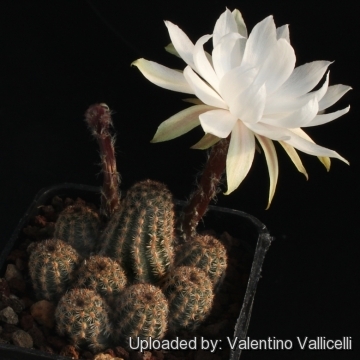 Pygmaeocereus familiaris Photo by: Valentino Vallicelli
Pygmaeocereus familiaris Photo by: Valentino Vallicelli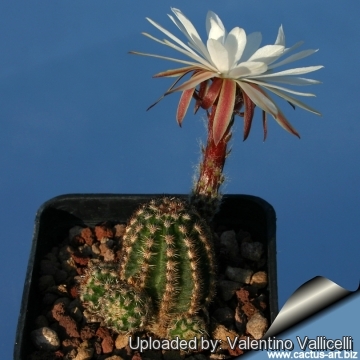 Pygmaeocereus familiaris Photo by: Valentino Vallicelli
Pygmaeocereus familiaris Photo by: Valentino Vallicelli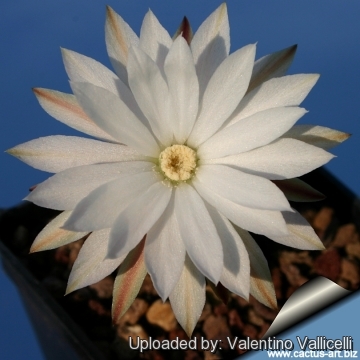 Pygmaeocereus familiaris Photo by: Valentino Vallicelli
Pygmaeocereus familiaris Photo by: Valentino Vallicelli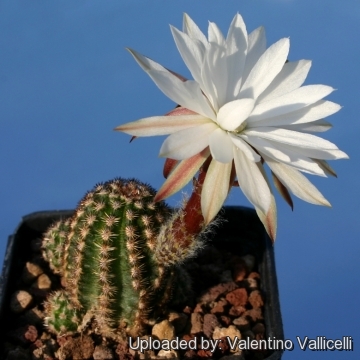 Pygmaeocereus familiaris Photo by: Valentino Vallicelli
Pygmaeocereus familiaris Photo by: Valentino Vallicelli














